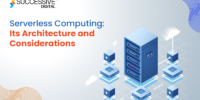Welcome to the era of cloud computing, where the agility and scalability of the cloud meet the regulatory landscape. Navigating compliance in the cloud can be a complex journey, but fear not! In this guide, we’ll explore quick tips to ensure your cloud practices align with industry regulations and standards, keeping your data secure and compliant. ☁️
1. Understand Applicable Regulations
Before you embark on your cloud compliance journey, understand the specific regulations that apply to your industry and geographical location. Whether it’s GDPR, HIPAA, or industry-specific standards, knowledge is the first step to compliance.
2. Choose Compliant Cloud Service Providers (CSPs)
Selecting a cloud service provider that complies with industry regulations is crucial. Major cloud providers often undergo third-party audits and provide compliance documentation, easing the burden of compliance on your end. ️
3. Data Encryption: Your Shield in the Cloud
Implement robust encryption mechanisms to protect sensitive data both in transit and at rest. Encryption adds an extra layer of security, making it harder for unauthorized parties to access your data.
4. Access Controls and Identity Management
Define and enforce strict access controls. Utilize identity management tools to ensure that only authorized personnel can access sensitive data and perform specific actions.
5. Regular Security Audits and Monitoring
Conduct regular security audits to identify vulnerabilities and monitor your cloud environment continuously. Automated tools can help track and alert you to any suspicious activities in real-time. ️♂️
6. Data Residency Compliance
Be mindful of data residency requirements, especially when dealing with international data transfers. Ensure that your chosen cloud provider has data centers in regions that align with your compliance needs.
7. Document Your Compliance Practices
Create comprehensive documentation outlining your compliance practices. This not only helps with audits but also serves as a reference for your team to ensure consistent adherence to compliance standards.
8. Stay Informed about Updates and Changes
Regulations and compliance standards evolve. Stay informed about any updates or changes to ensure that your cloud practices remain compliant with the latest requirements.
9. Incident Response Plan
Develop a robust incident response plan to address security breaches promptly. Having a well-defined plan in place can mitigate the impact of a security incident and demonstrate your commitment to compliance.
10. Collaborate with Legal and Compliance Experts
Work closely with legal and compliance experts to navigate the intricate web of regulations. Their expertise can provide valuable insights and ensure that your cloud practices align with the legal landscape. ⚖️
Conclusion
Navigating compliance in the cloud requires a proactive and informed approach. By understanding regulations, choosing compliant CSPs, implementing robust security measures, and staying vigilant, you can confidently harness the power of the cloud while ensuring the security and privacy of your data. Happy cloud computing! ☁️








